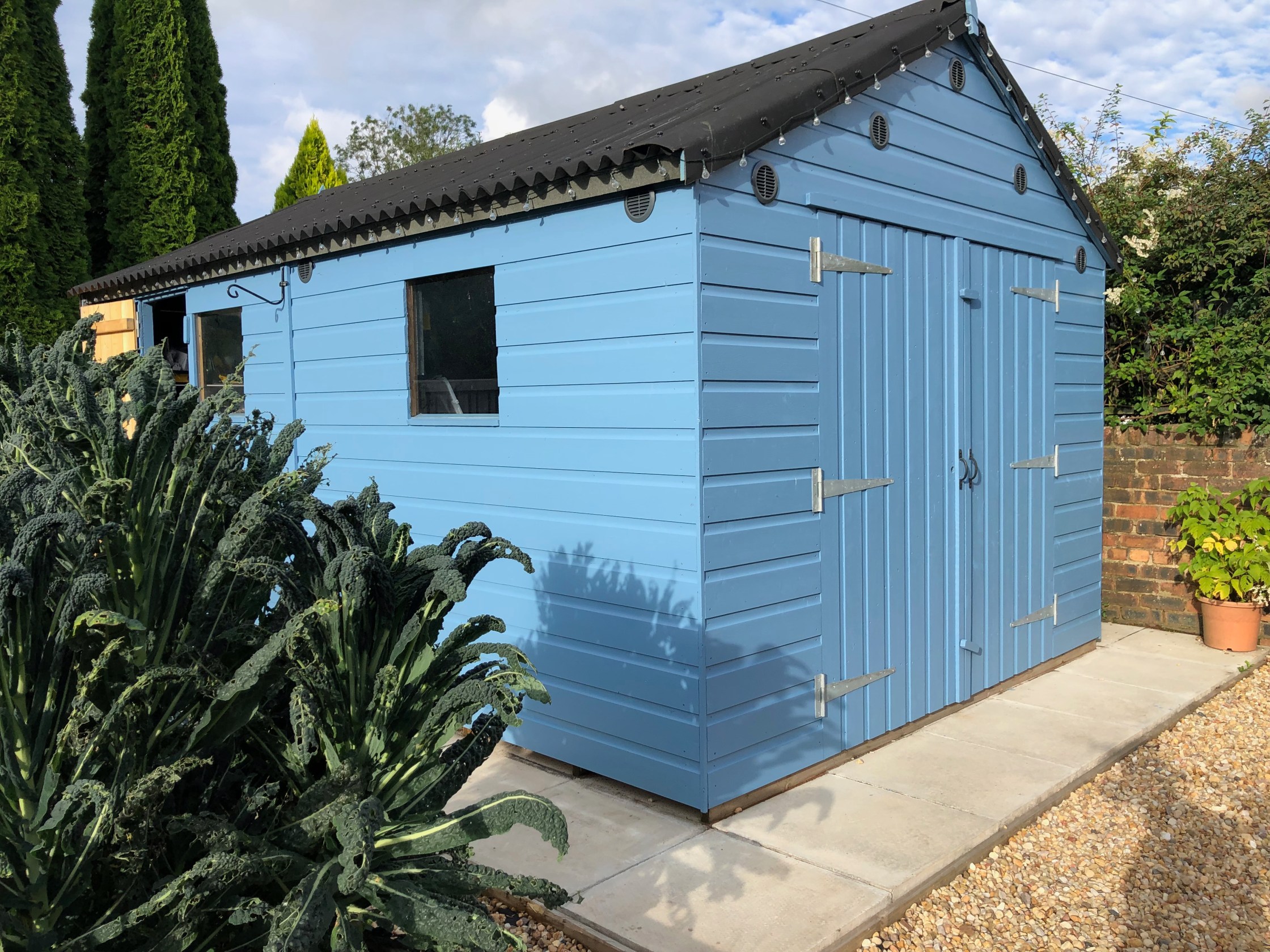The thing about painting that you forget unless you do it regularly is that painting consists of 90% not actually painting. I had learned this before but hadn’t had a reminder in a while. My shed re-painting project over the course of the past couple of weeks helpfully clued me in. Here are a few things I learned.
My shed is only one year old (and has already received some DIY attention for mold), but the original coat of paint that was applied at the shop where it was initially constructed was pretty weak so I made a commitment to re-paint the thing over the summer. There were plenty of thin spots and there were gaps where the tongue and groove boards had expanded and contracted with the wet weather, leaving some bare strips just between the boards.


This should be easy though! The shed had just been painted a year ago, and I was planning to use the exact same color again.
Can I just slap a couple of new coats on top and be good to go?
I wish it would have been that easy.
These are the main activities of painting: Gathering the required supplies, moving stuff, taping off or otherwise protecting stuff you don’t want to get paint on, going back to get other supplies you forgot from the shop, sanding or priming the surface to be painted, getting the paint and brushes organized, going back to the shop again to get new paint because your old paint is dried up, applying paint with a brush (or roller/spray), cleaning up all your brushes and pans once you are done, peeling off the tape protection, getting everything out again because you realize you missed a spot, putting it all away again.
Notice that the actual application of paint with the brush is but one of twelve or more activities that take just as much if not more time. This video from YouTube illustrates this pretty well. Even though the sprayer is used, the amount of covering prep and cleanup is extensive to the extreme!
So back to my desired approach of applying new paint directly over the existing paint. I was all ready to go and test things out. I brushed some paint on, only to find the paint refusing to adhere to the existing wood at all. It was almost running off completely.
What I came to find out (which is obvious in retrospect) is that these outdoor protective paints have waxes and other waterproofing elements that make it so that new coats of paint bead up just like water if you don’t do at least some sanding.
Luckily, I had access to my father-in-law’s belt sander. Even then though, my one-week job turned into two.
The other thing you forget about painting is that painting begets more painting. You will feel the inevitable desire to paint more things after you finish a project.
Why is that?
Maybe it is because newly painted things are actually really nice to look at. Or maybe because the actual painting part (the 10% of it) is so easy. Or maybe it is just because you have all the stuff out. You might as well do more. Whatever it is, once you paint one thing, you want to do more. This is a human-verifiable fact.
The shed is done, ready for winter.
The paint looks good.


We are all geared to re-paint our back fence now, but the rain hit and it might be a few weeks before that starts.
It might even have to wait until next year, just in time to be reminded again that painting is mostly not-painting.



















Comments welcome!